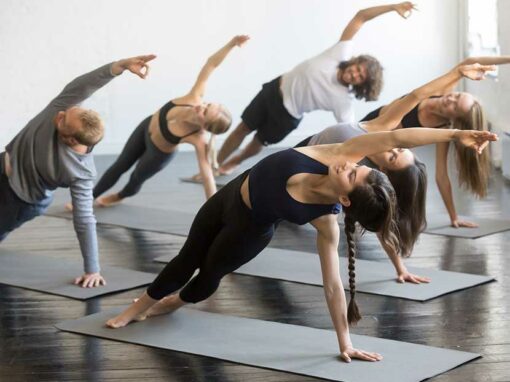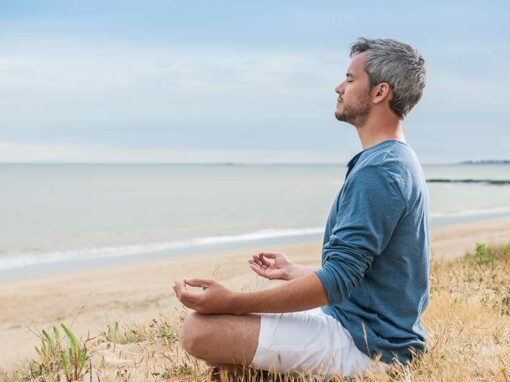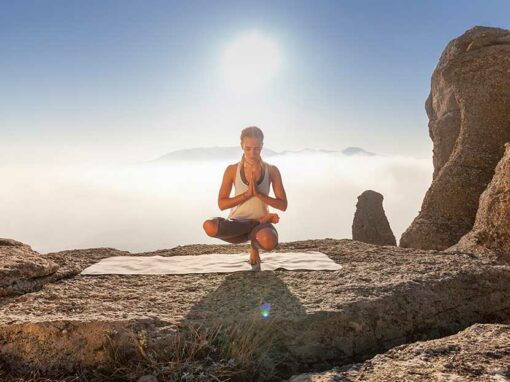If you are a very active person, Yin Yoga may be the recipe to finding that balance we aim for in our lives.
In one of my previous posts, I talked you through the history and benefits of Yin Yoga.
In this post, I will explore why to start practicing, when to practice, and how long to hold a pose.
Yoga, just like life itself, requires balance. If you are only doing the “yang” styles, it may be time to discover the yin path that works the deep tissues, energy, body, and mind.
We Don’t Use Our Body To Get Into A Pose; We Use The Pose To Get Into Our Body
One of the myths of the Western yoga practice is to achieve a model shape in each pose.
We force ourselves beyond the edge to embrace an idea of perfection that probably exists only in our minds.
Forcing ourselves to do something we are not prepared and ready for yet, is like fighting the ocean. Pretty silly, isn’t it?
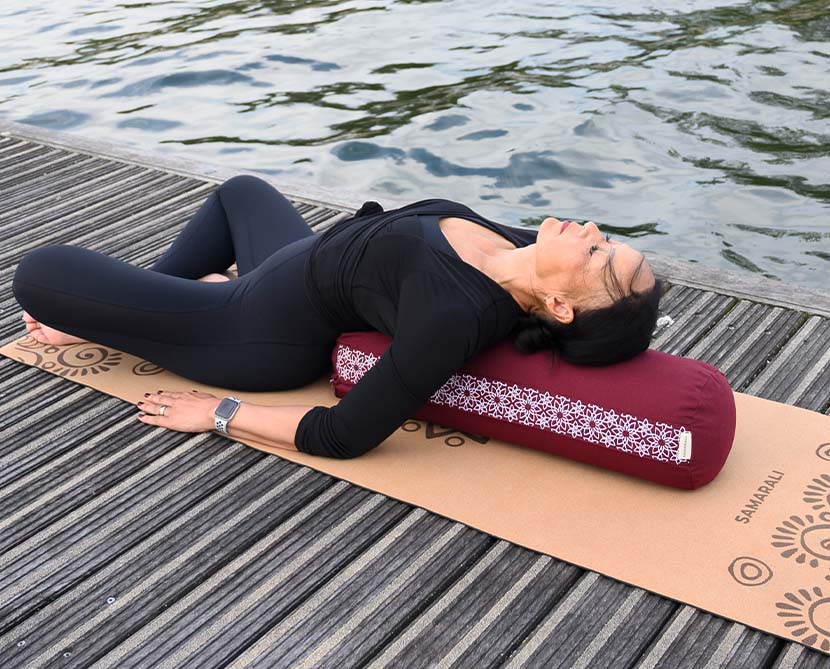
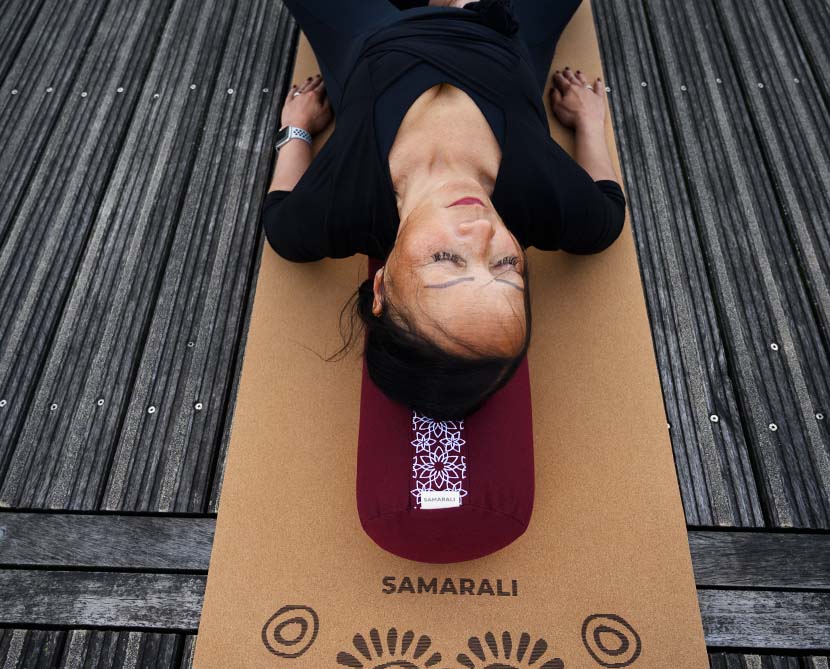
We should ride the edges with a gentle flowing breath, like a surfer riding the waves.
Accepting the things we cannot change is the serenity of Yin, and having the courage to change what needs to be changed is Yang.
Harmony in life comes from the wisdom to know the difference. This wisdom comes only out of experience.
In Yin, we learn how to play with our boundaries instead of fighting them. We listen to our body, reach the edge, and when the body opens and finds space, we can go deeper and move to the next. It’s a journey of self-exploration and self-knowledge.
You know the pose is doing its work if you can feel the body being stretched, squeezed, or twisted.
Learn To Feel
Another effective yin mantra is: if you are feeling, you are doing. Yin teaches us to move our focus to how we feel.
We learn how to be our inner teachers. If you have already experienced the stretch, stay where you are.
Going further is simply feeding our ego. The essence of Yin is yielding.
Pay attention, though, that Yin is not meant to be comfortable; if your body allows and invites you to go deeper, accept the invitation even though you will stay in discomfort.
Actually, Yin Yoga will take you out of your comfort zone and challenge your mind, that will want to leave, move, do anything but stay.
No teacher can tell you what you are feeling; you have to learn to recognize the pain, the burning sensations, from just dull or achy sorts of feelings.
Pain is not only physical; we also have past trauma and emotional edges to deal with. If you are not ready yet, notice and respect your boundaries.
Another thing to take into consideration is that our body changes constantly. Some days will look like a step back in confronting our edges.
Accept the changes, do the best you can, and be present to what arises.
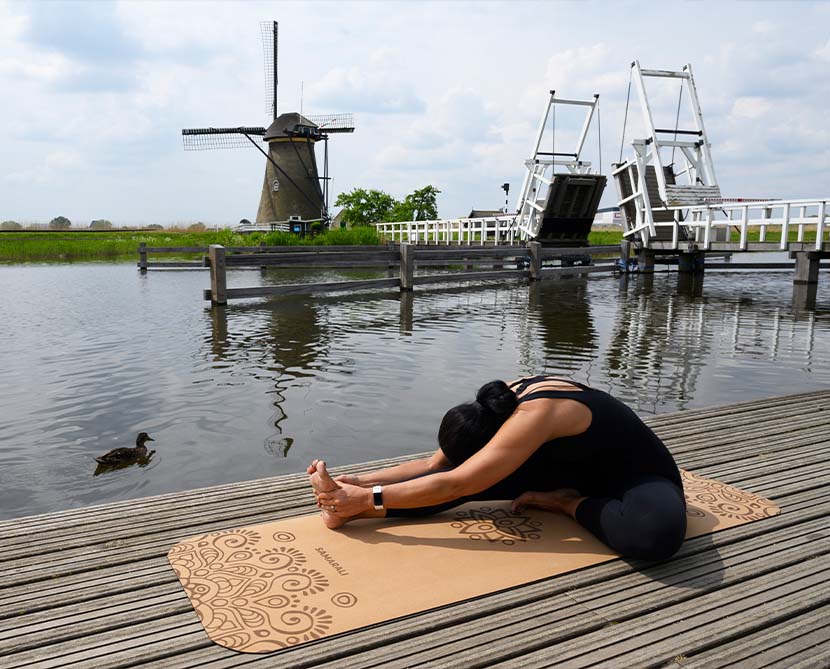
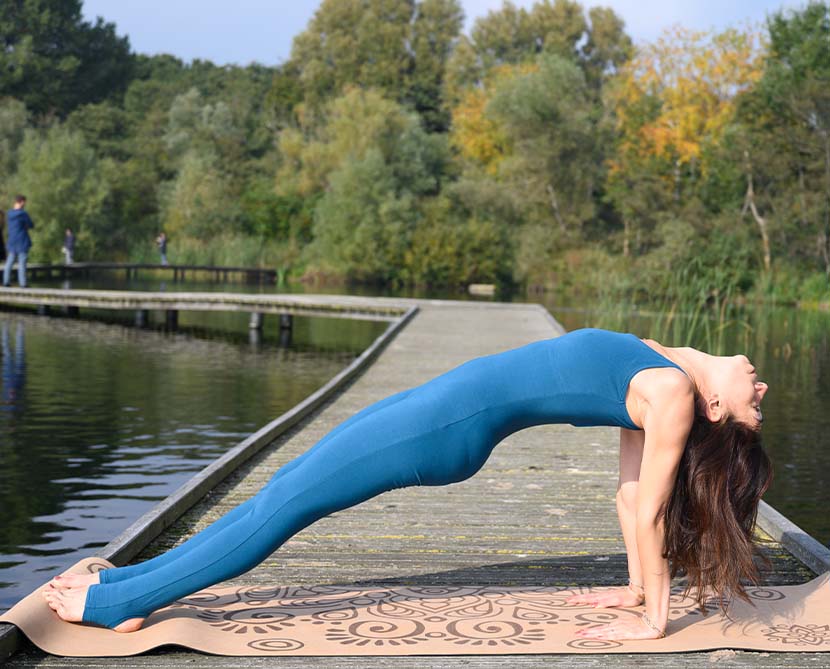
How And When To Practice
Even though Yin Yoga might look like an easy and gentle style of practice, some common precautions need always be considered.
Common Precautions
- If you have serious health issues: recovery from surgery, cardiovascular diseases, joint injury, epilepsy, if you are pregnant, discuss first with your health care professional.
- Don’t wear perfume (because of the deep breaths) or metal jewelry that makes a complete circle around the body (it will interfere with electromagnetic energy flow).
- Wear loose, comfortable clothes, and feel free to wear socks or extra layers (you will not generate internal heat)
- Have cushions, blocks, bolster, blankets handy to make the practice comfortable and juicy
- Switch off the phone and keep the space free of distractions.
When To Practice Yin Yoga
There is no right time to practice Yin Yoga; it depends on what you want to achieve.
You may want to practice in the morning when your muscles are still cool and stiff or calm the mind before sleep at the end of the day.
You can also decide to practice it before an active yang practice, after a long trip, or when you need to balance too many yang and hectic energies.
Yin Yoga In The Morning
In Yin, we want the stretch to be effective for our joints and tissues, so the muscles need to be relaxed, or they will absorb most of the stretch.
That’s why practicing in the morning or before a Yang practice will be more efficient.
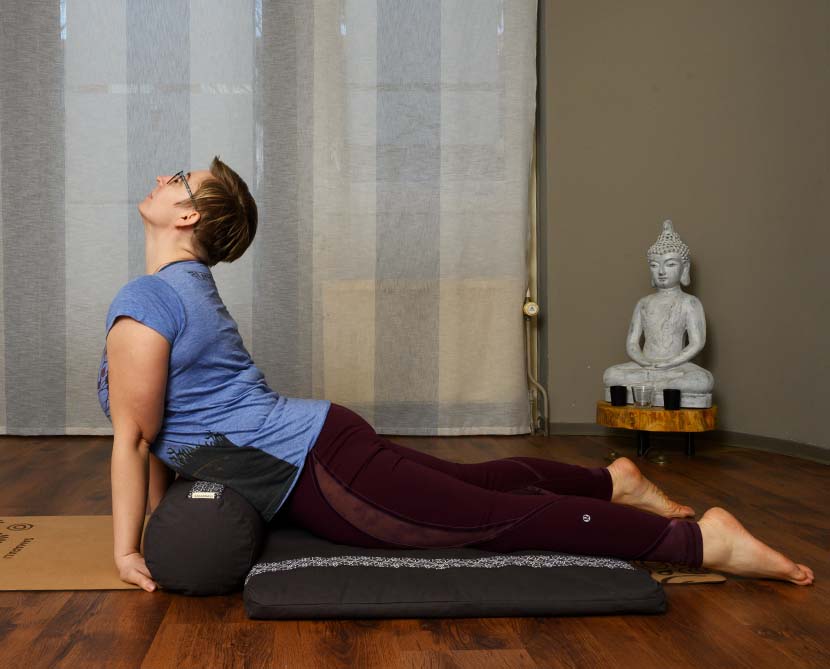
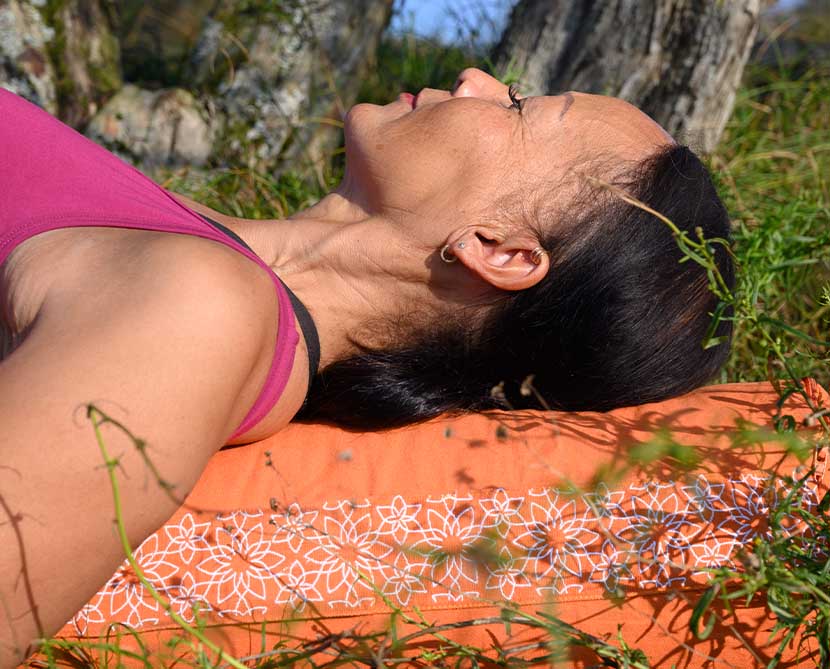
Yin Yoga Before Going To Sleep
If we want to relax the psychological system, it’ll be better to practice at the end of the day, even though our muscles are at their longest and warmed up.
If you already had a calm and less active day, a more Yang practice would probably be more beneficial.
Never stop inquiring about your inner guide and go for what you feel is right for you at that moment.
Finding Magic In Time
Time in Yin Yoga is one of the main elements. Iyengar already recommended holding a pose as long as you can.
Same in the Hatha Yoga Pradipika, where many seated postures were expected to be maintained for long periods.
How Long To Hold The Position In Yin Yoga?
In most Yang practices, we hold a pose for a few breaths. In Yin Yoga, we start to keep an asana for 1 minute if we are beginners, and we build from there up to 10/20 minutes.
The yin tissues we are working on are plastic, meaning: they require to be held for an extended amount of time.
The time needs to be reasonable, and the stress on the tissues non-maximum. We should perform the pose at its 80%.
Be mindful that long-held stresses creep into the connective tissues, making them longer, weaker, and less able to deal with loads or stresses. While in this weakened state, stresses can damage the tissue.
There is a reason we feel so fragile after a yin pose: we have weakened and lengthened our fascia and joints. We need to take care of how we move now.
How To Relax Our Muscles After Yin Yoga
That’s why another principle of yin yoga is ‘coming out slowly’.

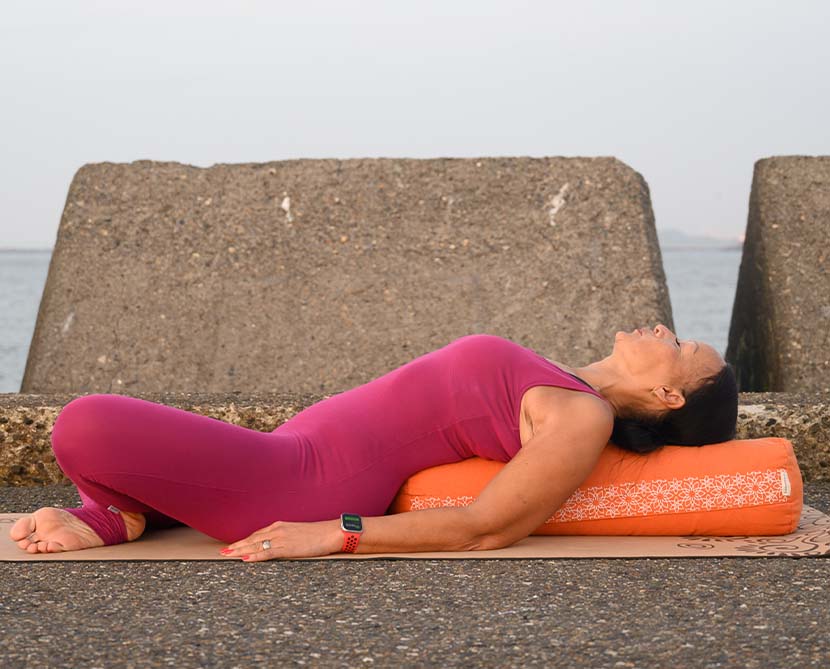
The point is: time is needed, after extensive static stress, to allow the creep that occurred to dissipate.
Therefore, we also need to use counter postures and other activities after doing a yin yoga practice or if we maintain a stressed position for a long time at our work.
After a long period of spinal flexion, engage in mild spinal extension.
If we have been sitting for a long time, get up and walk around for a few minutes. Simply standing can help tissues recover more quickly.
During the rest period that follows, the tissues adapt and become stronger.
The time we stay in the pose makes it also possible for the body to let go, and that experience can be liberating, challenging, or frustrating.
Either way, we feel something, and we have the time and the opportunity to confront these sensations. That’s the power of yin yoga.
Sources:
- Light On Yoga, by B. K. S. Iyengar
- Yin Yoga – holding for time
- Yin Yoga – time is the magic ingredient
- Yin Yoga – creep and counterposes
Marianna has been practicing Yoga for more than eight years, and in 2020
she completed the 200h Yoga Teacher Training in Vinyasa at YogaMoves in Utrecht.
She is passionate about sharing Yoga with others, living more sustainably,
and traveling. Here is her INSTAGRAM page.



